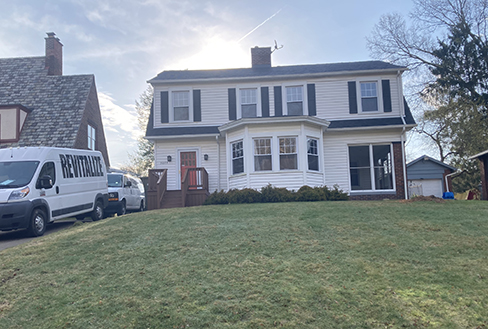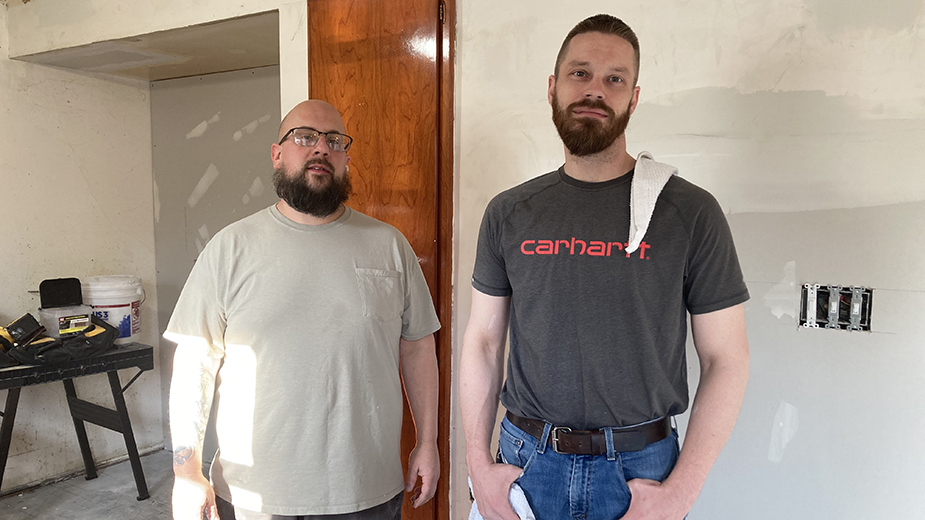YOUNGSTOWN, Ohio – Green spaces not only provide recreation and natural beauty but stabilize property values of nearby neighborhoods.
Green spaces like parks offer assets that attract people and development.
Hunter Morrison is an urban planner who worked on the Youngstown 2010 plan 20 years ago and still works as a city consultant.
As part of the development of the 2010 plan, community members were asked to list community assets.
Mill Creek MetroParks topped the list.
“It’s an asset from a variety of perspectives,” Morrison says. “It’s quality of life, but it’s also an asset in terms of holding real estate values.”
Neighborhood Stabilization
A well-maintained park stabilizes the neighborhoods around it, he says. “It’s pretty clear that the West Side neighborhoods in Youngstown are stabilized because of the presence of Mill Creek,” he says.
Morrison and John Bralich, the director of the Center for Applied Geographic Information Systems at Youngstown State University, did a study a few years ago of city parks and the areas around them.
“The literature suggests that one or two blocks away from the park are the blocks that are stabilized, particularly true in the case of Mill Creek but also Crandall Park on the North Side,” he says. “People like those parks. One of the values of having a legacy park system is that it’s something that is shared, acknowledged as an asset. There’s usually a strong desire to preserve it and enhance it.”
It’s an anchor to a neighborhood, a value-generating asset for the community. “In a place like Youngstown, which is 200 years-plus old, it’s a legacy of the urban parks movement,” Morrison says.
Bill Willoughby, an associate professor in the College of Architecture and Environmental Design at Kent State University, says some people call green space the commons.
During the pandemic, for example, green spaces became psychological respites from being inside, he says.
“I think that green space is expressive of a social life,” he says. “I think it takes on many forms.”
There can be active spaces for sports and physical fitness, social spaces for outdoor activities including theater or music performances.
“One example in Warren is the amphitheater which is clearly that,” Willoughby says.
Passive spaces, like parks or walking paths through green spaces, also fill another category.
Passive green spaces require less maintenance and therefore lower costs “but I think that they’re worthwhile and vital to making a community or a region more accessible.”
Mill Creek was the first metropolitan park district in Ohio, established in 1891.
“When you build housing, start with where your assets are,” Morrison says. “Do your infill where you’ve got something to work with.”
Value of Green Space
The Youngstown Neighborhood Development Corp. followed that idea, renovating homes on the east side of Mill Creek Park in the Idora neighborhood.
“There were streets that had wonderful houses that, 15 years ago, were being abandoned,” he says. “One of the things YNDC did was focus some of its initial work on parkside streets and with good measure.”
Ian Beniston, YNDC executive director, says when the organization started in 2010, it located its offices on Canfield Road, on the east side of the park. Locating near the park provided an opportunity for neighborhood stabilization.
“Mill Creek Park is a big asset to build and play off of,” Beniston says.

YNDC’s efforts to build on existing assets throughout the city continues. It’s rehabilitating and preparing to sell a house on Kiwatha, near the park, and a four-unit apartment on Indianola Avenue, about four blocks from the park, is being renovated and will be leased. Work is expected to begin soon on two lots on Glenwood Avenue slated for new homes. And another home renovated by YNDC, near McKelvey Lake, recently sold.
“People are attracted to and want to live in or proximate to parks for recreation and also for aesthetics,” Beniston says. “I live across the street from Mill Creek Park” which affords him easy access to walking, biking and kayaking.
Crandall Park on the north side of Youngstown, is another asset, Beniston and Morrison point out.
It’s a larger park which includes a playground, creek, pond and other amenities that make it an asset to build from, Beniston says.
Green spaces have been core in urban planning, Willoughby says, pointing to Frederick Law Olmsted who designed Central Park in New York City, built in 1858.
That’s an example of green space as a relief to urban life, the professor says.
“You look at Boston Commons which was one of the first spaces dedicated to the public,” he says. “More recently would be Millenium Park in Chicago…It’s essentially a green space over a parking deck that has an amphitheater and an outdoor walking area.”
An Evolution
The concept of green spaces has evolved.
“If we look at its evolution or its growth from the European city, they had spaces called a plaza or a piazza or in Great Britain, I think they call it a circus, or a square,” Willoughby says. “A square in the United States became more associated with a green space, sort of bringing nature into the city. I think it has a long, long history.”
In contemporary city planning, there’s been a vision or view called landscape urbanism. That’s relaying the city as natural while also creating landscape spaces that coexist with buildings.
Rooftop gardens are one example, or “buildings that become more continuous with the ground so that green space becomes part of the city,” he says. It also means greater density in development so more green space can be made available.
In New York City, for example, the more vertical a building stretches, the more floors you can have but you have to increase the amount of open space around the building. At ground level, there’s more green space.
“There’s a tradeoff,” Willoughby says. “If a building is low, it can occupy the entire block. If it’s tall, then you have more green space. There has always been this argument about lowscale urbanism or greater density and more green space.”
He believes there’s a balance between those two strategies that can increase walkability.
“I think there are natural places that should remain and be green space,” Willoughby says.
“These are assets from the past,” Morrison says. “Industrial cities like Youngstown invested heavily in parks because of the density in population, because of the needs of recreation in the population. At the time they were known as the lungs of the city.”
Pollution Solution
The trees and greenery provided a way to deal with pollution produced by the steel mills.
“It was a place where you could get away from some of the disease in the city caused by the density, like tuberculosis,” Morrison says. “There were fresh air camps in some parks. If you wanted to get kids away from the urban neighborhoods to experience fresh air and open space.”
Parks left behind become assets to build around for the future, he says.
“Understand your assets, connect your assets, I would say your blue-green assets – riverfronts, lake fronts, park networks. “Blue green assets can provide, if they’re connected, and be thought of as a system that can really provide the web around which you can rebuild the neighborhoods.”
Pictured at top: Jeff Kramer and Josh Potkay, construction team members at Youngstown Neighborhood Development Corp., work on a house at 3079 Kiwatha St.
